
Generative AI vs Predictive AI: A Comprehensive Guide for 2025f
Dec 21, 2024 9 Min Read 2895 Views
(Last Updated)
In the rapidly evolving world of artificial intelligence (AI), two technologies have emerged at the forefront: generative AI and predictive AI.
As businesses and researchers delve deeper into AI’s potential, understanding the distinctions and applications of these technologies becomes crucial.
Generative AI, known for its ability to create new data models, and Predictive AI, celebrated for anticipating outcomes based on existing data, are shaping the future of machine learning, marketing, and beyond.
This guide on offers a comprehensive overview of generative AI vs predictive AI, highlighting their significance in harnessing the power of data and algorithms for innovation.
Table of contents
- What is Generative AI?
- Key Characteristics
- Example Models and Techniques
- What is Predictive AI?
- Fundamental Concepts
- Example Models and Techniques
- Generative AI vs Predictive AI: Key Differences
- Generative AI: Benefits and Limitations
- Benefits
- Limitations
- Predictive AI: Benefits and Limitations
- Benefits
- Limitations
- Applications of Generative AI
- a) Creative Content Creation
- b) Virtual Environment Design
- c) Fashion and Product Design
- Applications of Predictive AI
- a) Financial Forecasting
- b) Customer Behavior Analysis
- c) Healthcare and Fraud Detection
- Choosing the Right AI for Your Needs
- Considerations
- Application Scenarios
- Concluding Thoughts...
- FAQs
- What is the difference between analytic AI and generative AI?
- Is Google a generative AI?
- How does predictive AI work?
What is Generative AI?
Generative AI, or gen AI, represents a branch of artificial intelligence that focuses on creating new data and content.
Unlike traditional AI models that primarily analyze and predict based on existing data, generative AI pushes the boundaries by generating novel outputs, ranging from text and images to complex data structures.
This capability makes it a powerful tool across various sectors, fostering innovation and creativity.
Key Characteristics
- Data Generation: At its core, generative AI is designed to produce new data that mimics real-world data. It learns from vast datasets and can generate high-quality, realistic outputs that are often indistinguishable from actual human-created content.
- Adaptability: These models adapt to various inputs and scenarios, making them versatile across different applications. Whether it’s generating textual content or creating synthetic images, generative AI models can adjust their outputs based on the given prompts.
- Learning Capability: Utilizing advanced machine learning techniques, such as deep learning and neural networks, generative AI continuously improves its accuracy and output quality by learning from each interaction and feedback.
Example Models and Techniques
- Generative Adversarial Networks (GANs): This model uses two neural networks, a generator, and a discriminator, that work against each other to improve the output’s realism. GANs are particularly known for their ability to create photorealistic images.
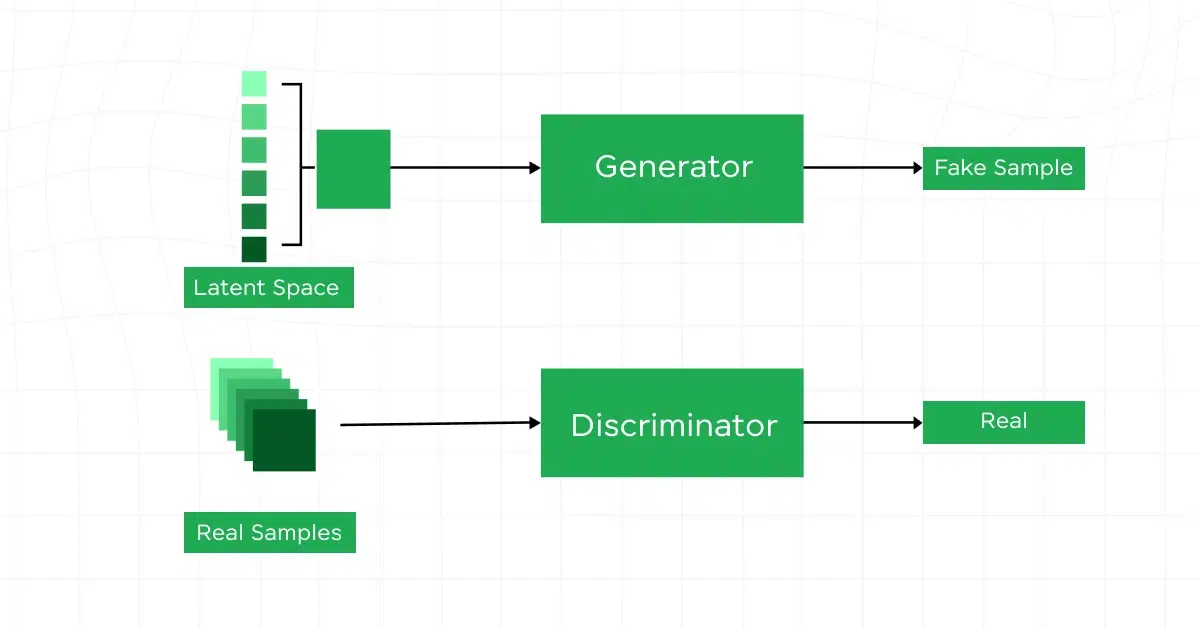
- Transformers: These models have revolutionized natural language processing. They analyze and generate text based on the relationships and context of words in large text datasets.
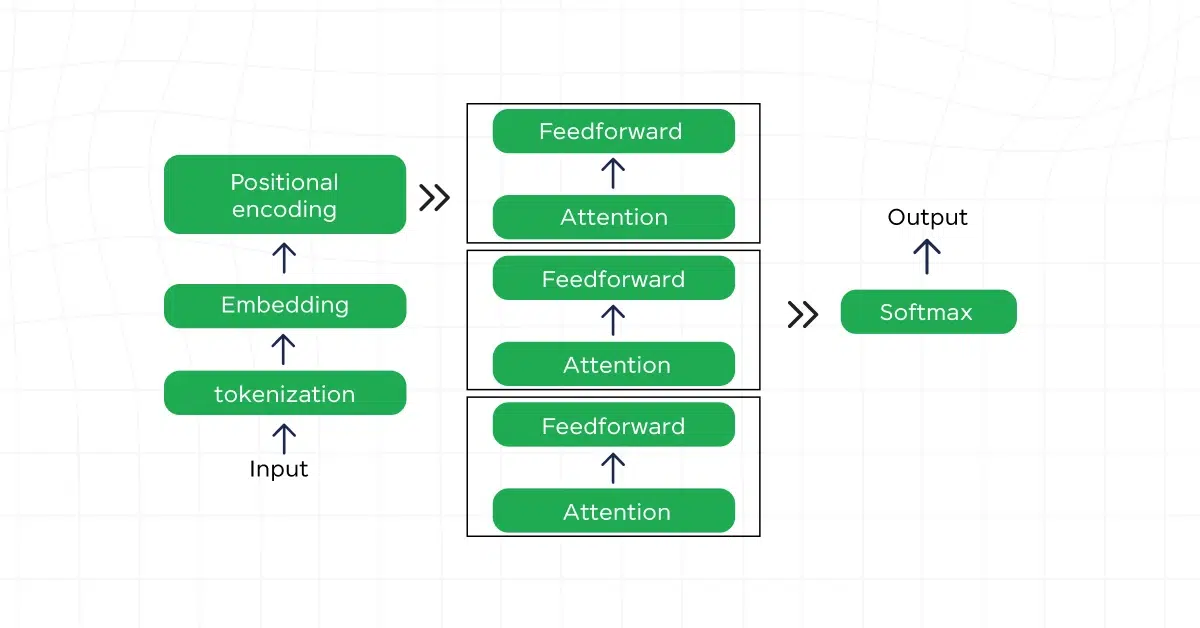
- Variational Autoencoders (VAEs): VAEs are effective in generating new data that is similar to the training data. They are widely used for generating new images and enhancing low-resolution images.
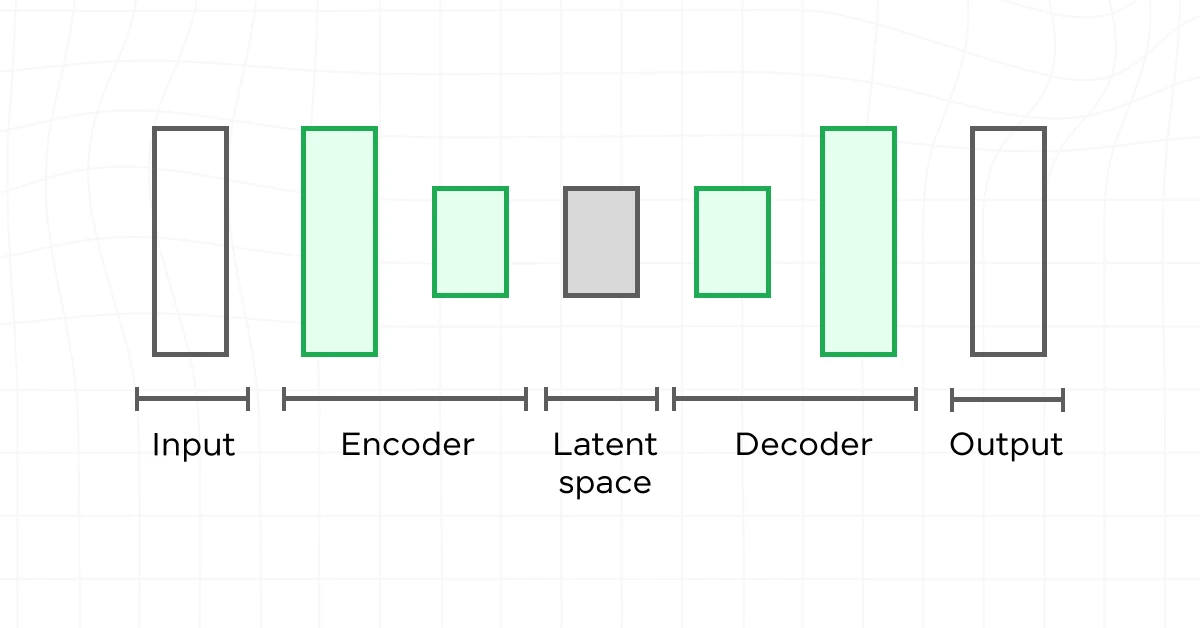
Learn More About 7 Benefits of AI-Powered Learning Environments
To further clarify the capabilities of generative AI, here’s a technical differentiation table that contrasts generative AI with traditional predictive AI:
| Feature | Generative AI | Predictive AI |
|---|---|---|
| Primary Function | Data creation | Data analysis and prediction |
| Data Handling | Generates new data based on learned patterns | Analyzes existing data to find patterns |
| Learning Type | Unsupervised or semi-supervised | Supervised |
| Output Variety | High (can generate multiple outputs per input) | Low (typically one output per input) |
| Applications | Content creation, art, R&D, etc. | Forecasting, diagnostics, etc. |
This table highlights the fundamental differences between Generative AI vs Predictive AI and how these AI technologies operate and are applied in real-world scenarios, underlining the creative potential of generative AI compared to the more analytical nature of predictive AI.
Before moving forward, make sure you understand the basics of Artificial Intelligence & Machine Learning, including algorithms, data analysis, and model training. If you want to learn more, join GUVI’s AI & Machine Learning Courses with job placement assistance. You’ll discover important tools like TensorFlow, PyTorch, scikit-learn, and others. Plus, you’ll work on real projects to gain practical experience and improve your skills in this fast-growing field.
What is Predictive AI?
Predictive AI, or predictive analytics, harnesses machine learning algorithms and statistical methods to analyze historical data and forecast future events. This technology is pivotal for industries where strategic planning based on predictive patterns can lead to significant advantages.
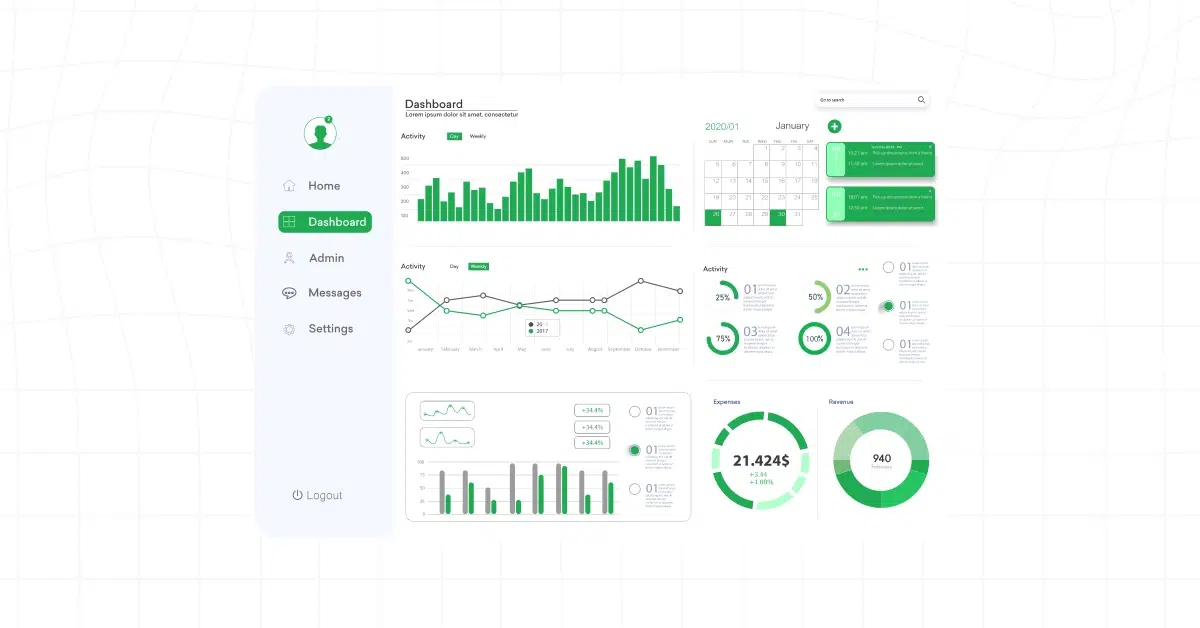
Fundamental Concepts
Predictive AI operates by examining past data to identify trends and patterns. By applying various machine learning models, it can predict future outcomes. These predictions are grounded in data-driven insights, which are continually refined through training with new data.
The process typically involves data collection, preprocessing to clean the data, and splitting it into training and testing sets. The training set helps the model learn and adapt, while the testing set evaluates its predictive accuracy.
Example Models and Techniques
Several models and techniques are employed within predictive AI to cater to different predictive needs:
- Regression Models: These are used to predict continuous outcomes, such as sales forecasts or temperature readings.
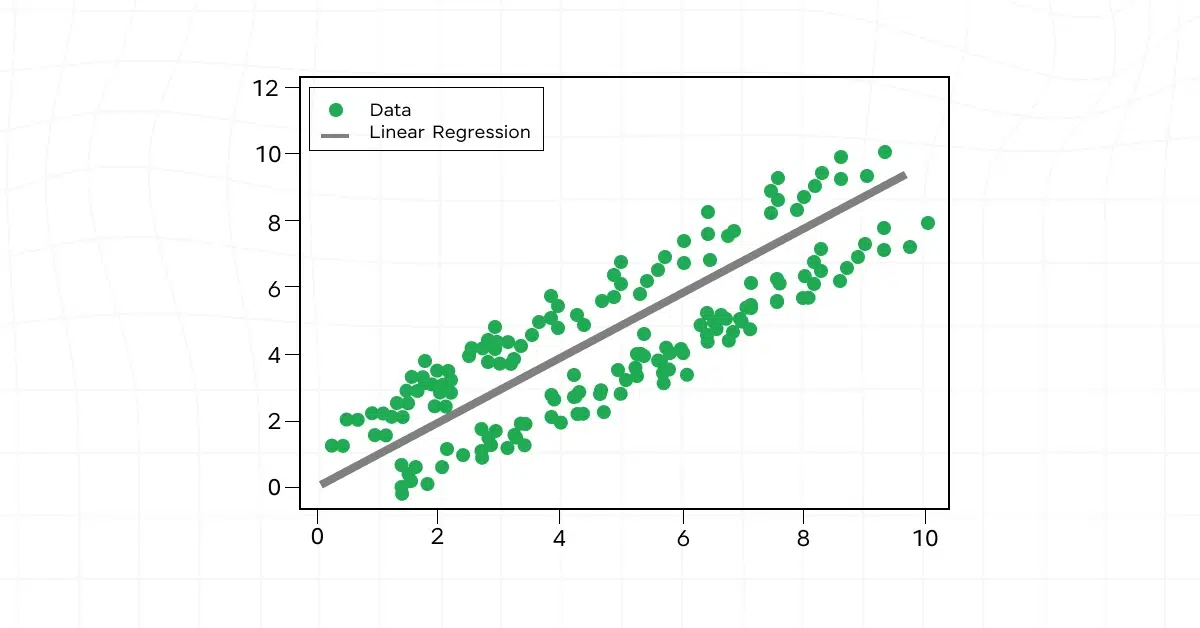
- Classification Models: Useful in predicting categorical outcomes, like whether an email is spam or not.
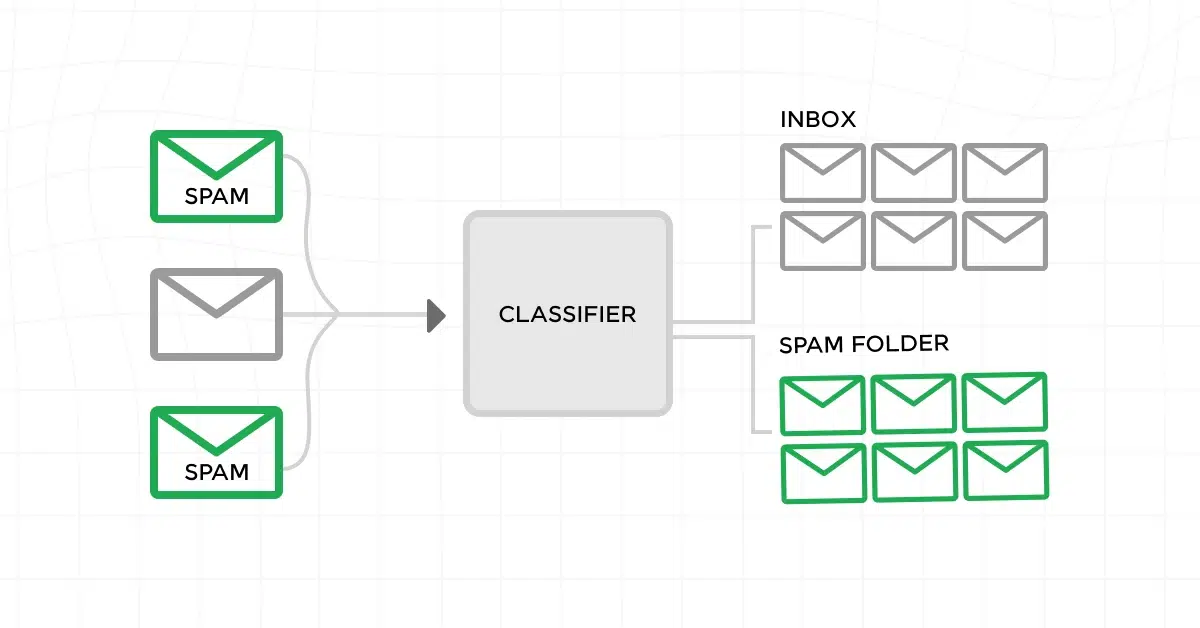
- Time Series Analysis: This involves predictions based on data indexed in time order, useful in stock market and sales forecasting.
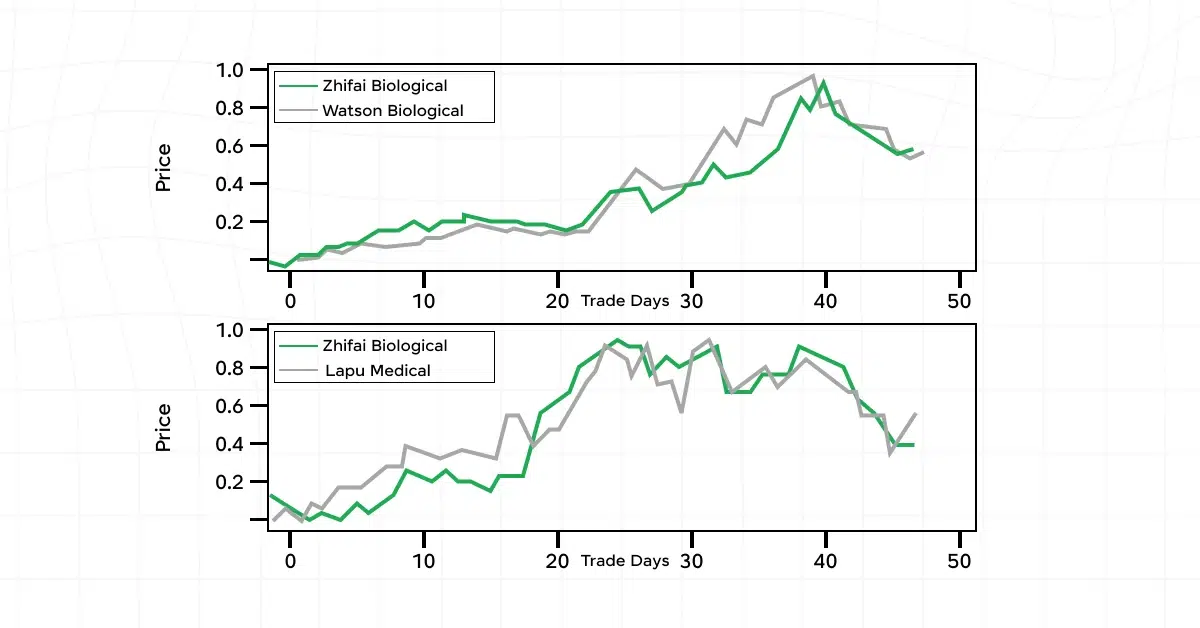
- Neural Networks: These can model complex patterns and relationships that other algorithms might miss, useful in image recognition and natural language processing.
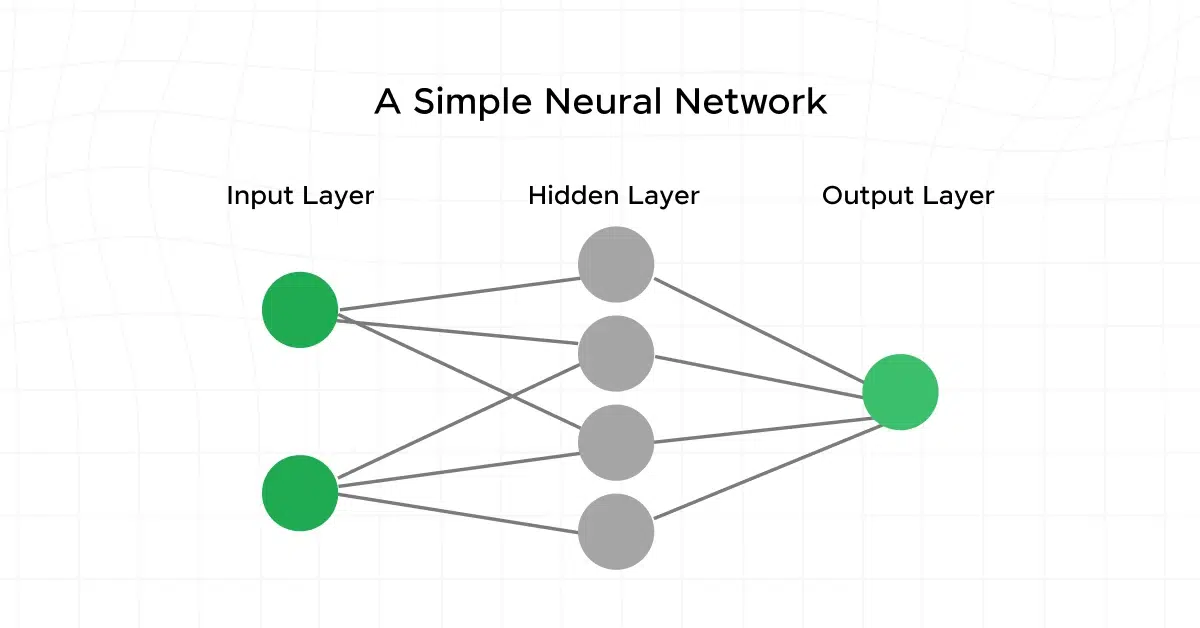
To provide a clearer understanding of how predictive AI differs in functionality and application from generative AI, here’s a detailed table:
| Feature | Predictive AI | Generative AI |
|---|---|---|
| Primary Function | Forecasting future events based on historical data | Generating new data instances |
| Data Requirement | Extensive historical data | Data for model training |
| Learning Approach | Supervised learning | Unsupervised or semi-supervised learning |
| Output | Specific predictions | Diverse data generation |
| Typical Applications | Risk assessment, demand forecasting | Content creation, data simulation |
This table underscores that while both forms of AI leverage data, predictive AI focuses on forecasting and decision-making, whereas generative AI excels in creating new, diverse outputs.
Also Read: Best Product-Based Companies for AI Engineers in 2025
Generative AI vs Predictive AI: Key Differences
While both these technologies utilize machine learning at their core, they diverge significantly in their objectives, functions, and how they handle data.
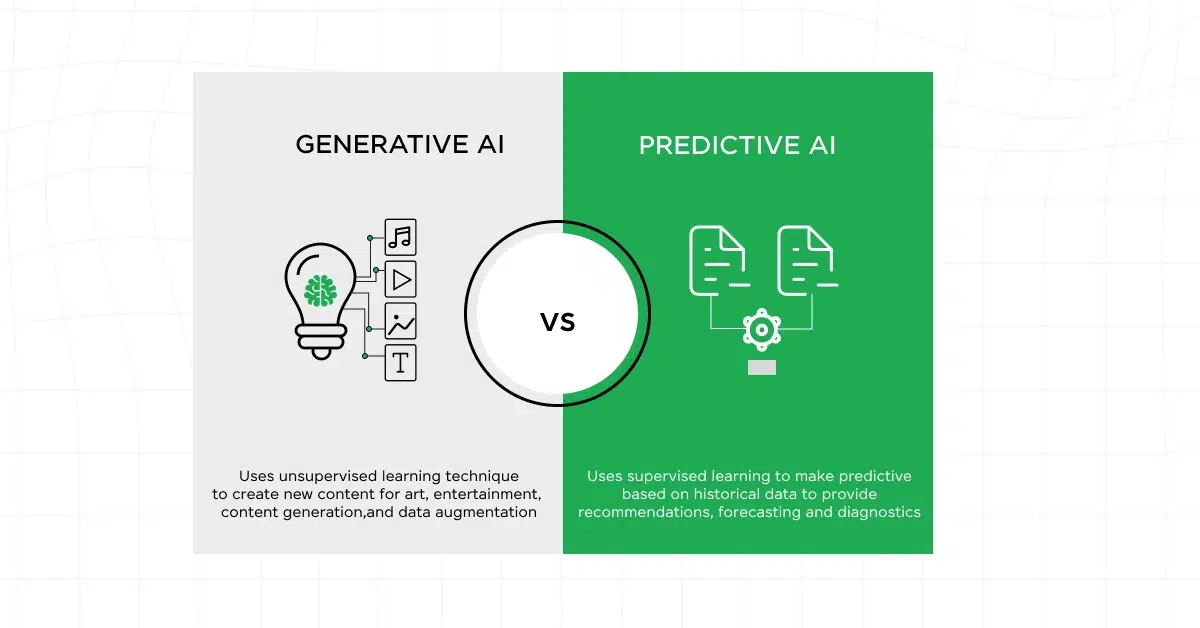
This section delves into the key differences between these two powerful forms of AI, focusing on their objectives and functions, required data types, and the intricacies of their training processes and complexity.
| Aspect | Generative AI | Predictive AI |
|---|---|---|
| Objective and Function | – Generate new, original content or data – Focuses on creativity, producing outputs such as text, images, and music – Used in creative fields like art, music, and fashion | – Predict and analyze existing patterns or outcomes – Focuses on forecasting and decision-making based on historical data – Applied in domains like finance, healthcare, and marketing |
| Required Data Types | – Needs diverse and comprehensive data – Data used to learn patterns and relationships for generating new content – Example: text generation models trained on vast datasets of text | – Relies on historical data – Data used to accurately represent phenomena or trends for predictions – Example: financial models trained on past market data |
| Training Process and Complexity | – Involves complex training processes – Utilizes models like Generative Adversarial Networks (GANs) and Variational Autoencoders (VAEs) – Captures variability and patterns for high-quality output generation – More resource-intensive and complex due to the creativity required – Example: GANs training involves two networks (generator and discriminator) in a zero-sum game | – Engages in less complex training processes – Focuses on supervised learning with labeled datasets – Learns relationships between input features and target outputs – Uses techniques like gradient descent to optimize performance – Example: linear regression models learning to map features to outcomes |
In conclusion, while both generative AI and predictive AI harness the power of machine learning, their divergent objectives, required data types, and training processes set them apart.
Also Read: ChatGPT 3.5 vs 4.0: Is it worth it to buy a ChatGPT Plus Subscription?
Generative AI: Benefits and Limitations
Benefits
- Boosting Productivity and Creativity: Generative AI significantly enhances productivity across various sectors by automating creative processes such as writing, coding, and even composing music. This automation allows for rapid content generation, which can be particularly beneficial in fields requiring frequent content updates like marketing and customer support.
- Innovative Problem Solving: Generative AI can solve complex problems and drive innovation by generating new data and simulations. This is especially useful in research and development sectors where new ideas and approaches are constantly required.
- Data Augmentation: Generative AI aids in machine learning applications by creating synthetic data. This is crucial for training models where original data is scarce or biased, thus helping improve the model’s performance by providing a richer, more balanced dataset.
- Transformative Impact: The technology’s ability to create novel content from existing data can transform industries by generating unique customer experiences and providing solutions that were previously unattainable.
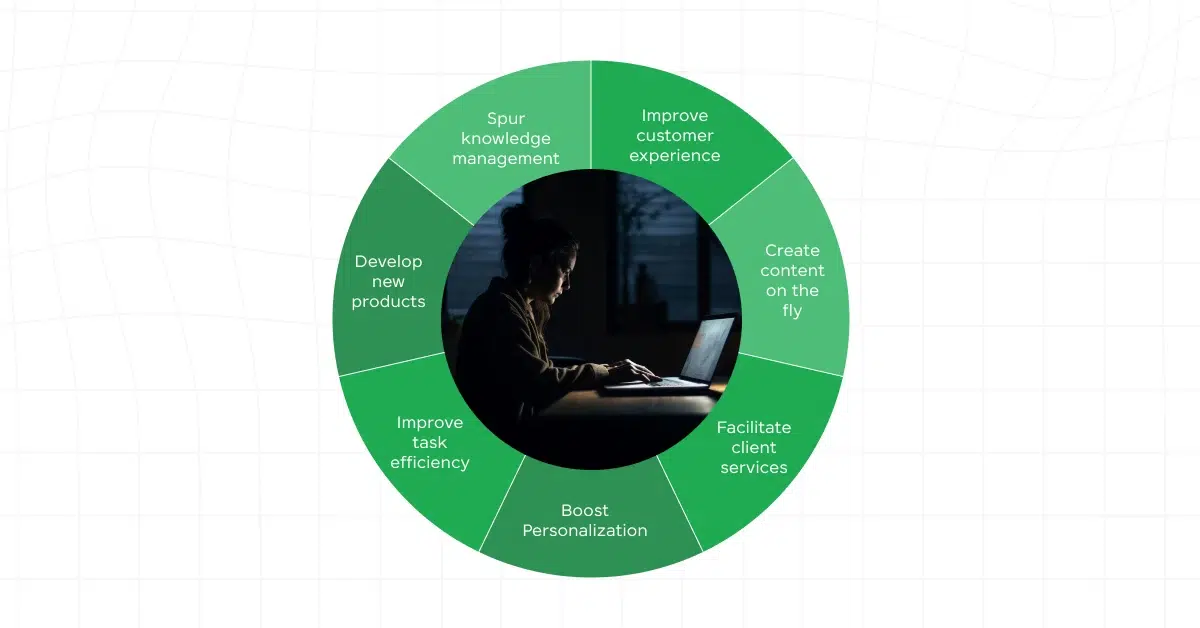
Limitations
- Accuracy and Reliability Issues: One of the most significant challenges with generative AI is the accuracy of the generated content. Often referred to as “hallucinations,” these inaccuracies can result in outputs that are not only irrelevant but potentially misleading.
- Ethical and Legal Concerns: The use of generative AI raises substantial ethical questions, especially regarding the ownership of generated content and the biases that may be perpetuated through its use. Legal challenges also arise, particularly in industries governed by strict data privacy and intellectual property laws.
- High Resource Requirements: The computational power required to train and operate large generative models is immense. This can be a significant barrier for smaller organizations or startups with limited access to resources.
- Security Vulnerabilities: Generative AI systems are susceptible to adversarial attacks, which can manipulate AI behavior in unintended ways. Ensuring the security of these systems is crucial to prevent misuse.
- Complexity in Management and Integration: The complexity of generative AI models makes them difficult to manage and integrate. Specialized technologies and practices, such as MLOps, are often necessary to harness their full potential effectively.
To further elaborate on the technical aspects and differentiate generative AI’s capabilities from other AI technologies, here’s a detailed table:
| Aspect | Details |
|---|---|
| Model Complexity | High, due to the need for creating new, high-quality outputs that mimic real-world data. |
| Data Requirements | Requires extensive and diverse datasets to learn effectively and generate accurate outputs. |
| Ethical Considerations | High, involves concerns around data privacy, intellectual property, and output biases. |
| Resource Intensity | Significant computational resources needed for training and operation. |
| Security Risks | Significant computational resources are needed for training and operation. |
This table highlights the technical nuances and operational challenges of generative AI, helping you understand the balance between its transformative potential and the practical limitations you might face.
Must Know: 14 Best AI Image Generator Tools
Predictive AI: Benefits and Limitations
Benefits
- Enhanced Decision-Making: Predictive AI facilitates efficient and swift decision-making by forecasting potential outcomes and trends. This capability allows businesses to stay ahead competitively by anticipating market demands and customer needs.
- Operational Efficiency: By integrating AI with predictive analytics, the processing time is dramatically reduced, enabling design teams to explore a wider range of product variations and optimize their processes, thereby enhancing overall operational efficiency.
- Cost Reduction and Maintenance: Predictive AI’s ability to forecast equipment failures and anticipate maintenance needs leads to significant cost savings and prevents costly breakdowns, ensuring smoother operations.
- Risk Management: Utilizing historical data, predictive AI identifies potential business risks, providing crucial insights for risk mitigation and informed decision-making.
- Customer Interaction Optimization: Analyzing customer behavior data helps in optimizing the timing and channels for customer interaction, enhancing the effectiveness of marketing strategies, and improving customer service.
- Supply Chain Management: In the dynamic environment of today’s markets, predictive AI improves supply chain forecast accuracy, particularly crucial in post-pandemic recovery. Real-time data access facilitated by AI enables more informed decision-making across the supply chain.
- Market Trend Analysis: AI-powered predictive analytics harness vast amounts of data to uncover valuable insights, detect trends, and make accurate predictions that drive business success.
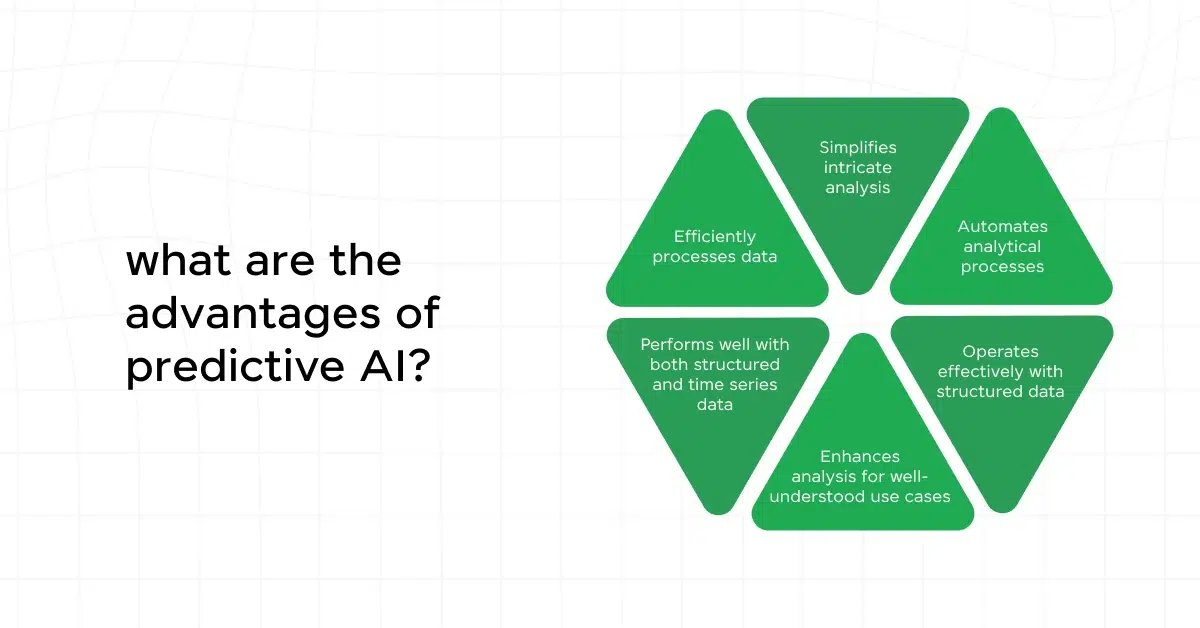
Limitations
- Data Dependency: The effectiveness of predictive AI heavily relies on the quality and quantity of data available. Insufficient or poor-quality data can lead to inaccurate predictions and potentially skew business strategies.
- Ethical and Privacy Concerns: The use of predictive AI raises significant ethical questions, particularly in sectors like healthcare where data security and privacy are paramount. Ensuring the confidentiality and ethical use of data is a persistent challenge.
- Complexity and Cost of Implementation: Setting up a productive data team for predictive AI involves high initial setup costs and requires specialized knowledge, making it a significant investment that might not be feasible for all organizations.
- Overfitting and Data Bias: Predictive models can sometimes learn irrelevant patterns, a phenomenon known as overfitting, leading to distorted outcomes. Biases in data collection can further exacerbate this issue, resulting in subpar prediction results.
- The “Black-Box” Issue: The algorithms used in predictive AI often do not provide clear explanations for their outputs, which can lead to issues of accountability and transparency, particularly if the predictions are incorrect.
To illustrate the technical aspects and operational capabilities of predictive AI in contrast to other AI technologies, here’s a detailed differentiation table:
| Feature | Predictive AI | Other AI Technologies |
|---|---|---|
| Primary Function | Forecasting future events based on historical data | Generating new data or performing actions |
| Data Requirements | Extensive historical data | Varied, depending on application |
| Operational Focus | Risk assessment, demand forecasting | Content creation, automation |
| Complexity | High, due to the need for accurate data analysis | Depends on specific technology |
| Ethical Considerations | High, especially regarding data privacy | Varies with application and implementation |
| Cost Implications | Potentially high setup and maintenance costs | Variable |
This table helps you understand where predictive AI stands in terms of functionality, requirements, and challenges compared to other AI forms, providing a clear perspective on its unique advantages and limitations.
Also Read: Best AI Tools for Students 2025
Applications of Generative AI
Generative AI is revolutionizing various industries by enabling the creation of dynamic, diverse, and intricate digital outputs. This technology is particularly influential in creative content creation, virtual environment design, and fashion and product design.
a) Creative Content Creation
- Generative AI has transformed the landscape of content creation by automating and enhancing the production of text, images, and videos.
- Large language models and image AI tools, such as DALL-E 2, are capable of generating high-quality content that can rival human-created works.
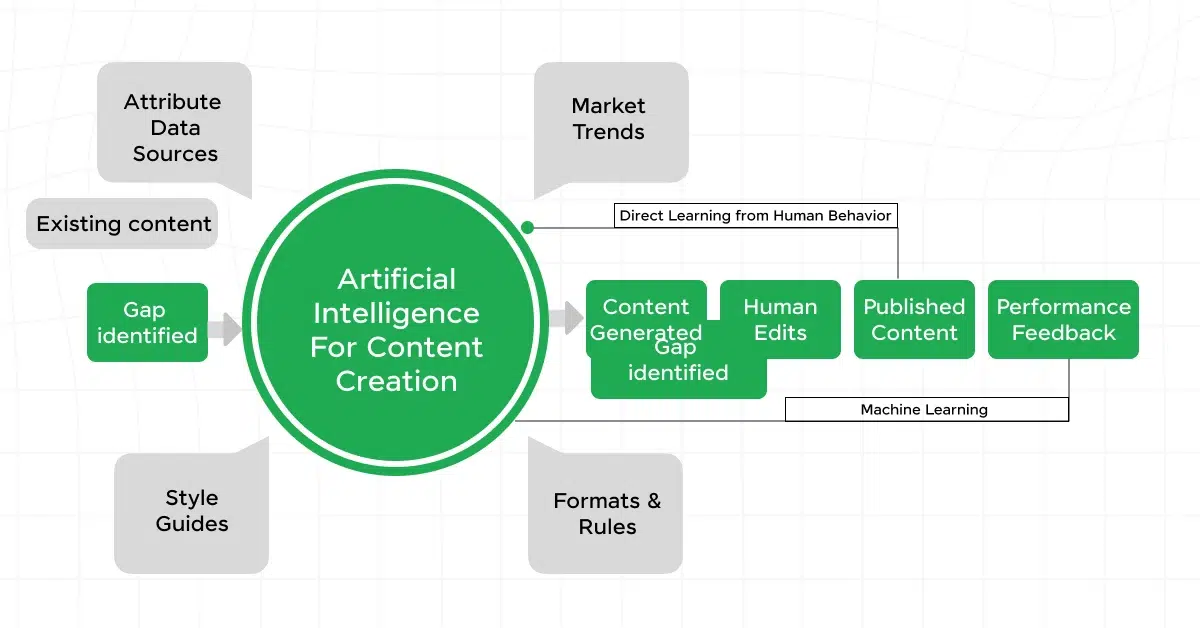
- This not only saves time but also introduces a new level of creativity and personalization. For instance, AI can produce personalized content tailored to individual preferences, thereby increasing engagement and satisfaction.
- Companies like Stitch Fix and Mattel are utilizing these capabilities to recommend products and design new toys, showing the broad applicability of generative AI in creative domains.
b) Virtual Environment Design
- In the gaming and simulation industries, generative AI plays a crucial role in creating realistic and engaging virtual worlds.
- By using procedural generation techniques, AI algorithms can create vast landscapes, detailed environments, and dynamic scenarios that enhance the user experience.
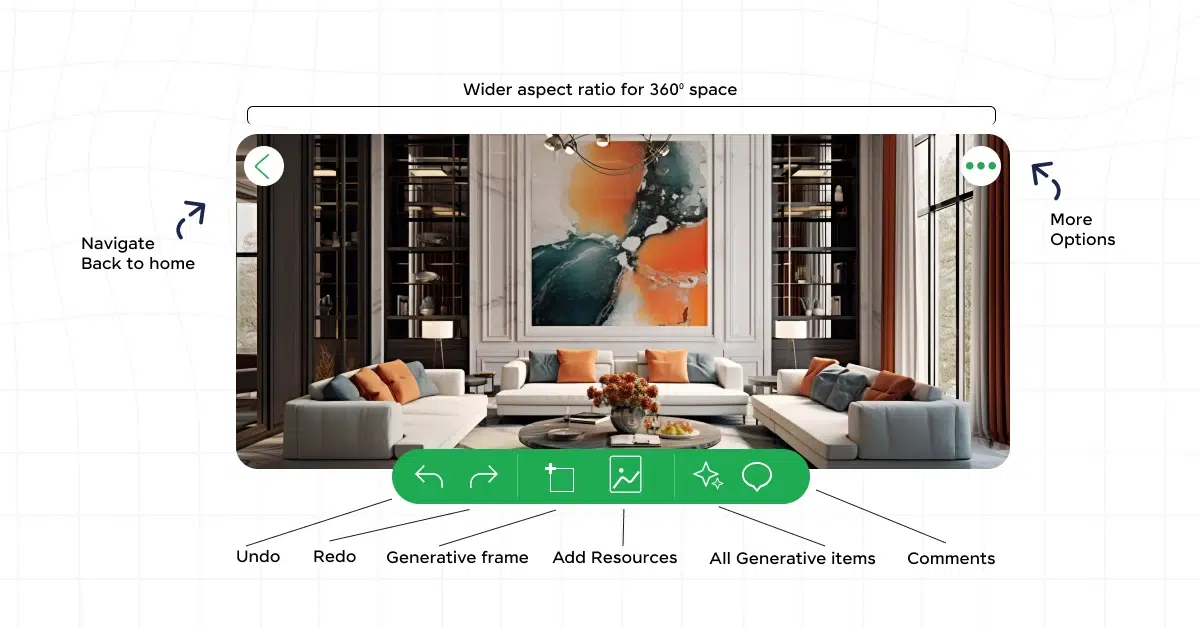
- Games like Minecraft and No Man’s Sky leverage generative AI to offer players unique, expansive worlds with endless possibilities.
- This technology not only makes virtual environments more lifelike but also significantly cuts down development time and costs, allowing for more rapid production cycles.
c) Fashion and Product Design
- Generative AI is making a significant impact on the fashion industry by streamlining the design process and enabling the rapid visualization of new collections.
- AI-driven tools allow designers to input preliminary ideas and quickly see an array of design variations, which accelerates the creative process and aids in decision-making.

- For example, the AI platform Cala enables fashion designers to experiment with different styles and fabrics efficiently, pushing the boundaries of traditional fashion design.
- Additionally, generative AI can analyze consumer data to predict trends, which helps brands stay ahead in the competitive market.
To encapsulate the technical distinctions and capabilities of generative AI across these applications, here is a detailed differentiation table:
| Application Area | Capabilities of Generative AI | Impact on Industry |
|---|---|---|
| Creative Content Creation | Automated generation of text, images, and videos | Enhances productivity, personalization, and variety |
| Virtual Environment Design | Procedural generation of landscapes and dynamic scenarios | Reduces development time, enhances user engagement |
| Fashion and Product Design | Rapid visualization and trend analysis | Accelerates design process, predicts market trends |
This table highlights how generative AI is tailored to meet specific needs in different sectors, showcasing its versatility and transformative potential.
Also Explore: Free upskilling event: AI-for-Women by GUVI offers AI skills & certifications to 30K+
Applications of Predictive AI
a) Financial Forecasting
Predictive AI transforms the landscape of financial forecasting by leveraging vast amounts of data to generate precise and adaptable predictions.
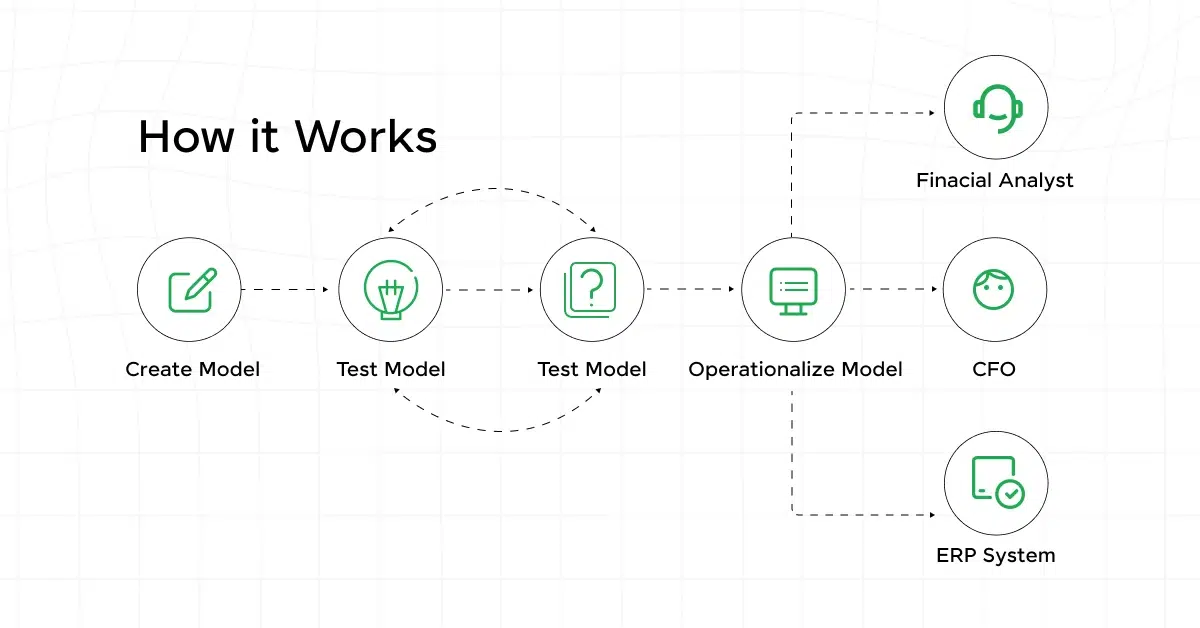
Traditional models, which often rely on a limited dataset, struggle to accommodate the dynamic nature of financial markets.
In contrast, AI-driven tools integrate both internal performance metrics and external factors like market conditions and even weather impacts, enhancing the accuracy of financial forecasts.
- Adaptability and Learning: AI models continuously learn and adapt. Each new data point refines the model’s predictions, making them increasingly reliable over time.
- Bottom-Up Forecasting: Techniques like those employed by Paro involve starting forecasts at the most granular level and aggregating upwards, which not only improves accuracy but also simplifies pinpointing discrepancies when they occur.
- Real-Time Data Utilization: The capability to process and analyze real-time data allows AI models to maintain high accuracy, crucial for dynamic and fast-paced financial environments.
b) Customer Behavior Analysis
AI’s predictive capabilities are revolutionizing marketing strategies by providing deep insights into customer behavior.
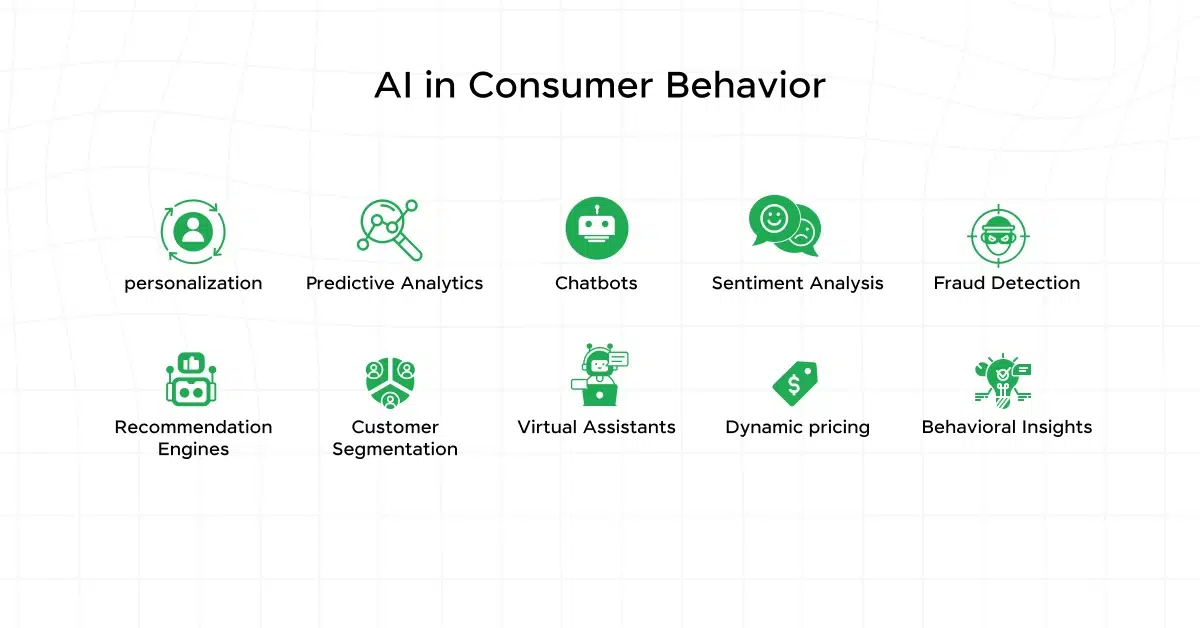
This technology allows businesses to anticipate customer needs and tailor marketing efforts accordingly, significantly enhancing customer engagement and satisfaction.
- Trend Identification and Personalization: AI tools analyze purchasing patterns and preferences to facilitate highly targeted and personalized marketing campaigns.
- Predictive Customer Segmentation: By segmenting customers based on behavior and predicted needs, companies can craft more effective marketing strategies that resonate with each segment.
- Enhanced Customer Interaction: AI-driven analytics enables businesses to optimize the timing and method of customer interactions, improving the overall effectiveness of marketing campaigns.
Also Read: 6 Best AI Tools for Coding
c) Healthcare and Fraud Detection
In healthcare, predictive AI is instrumental in improving patient care through precise predictions about health outcomes and enhancing fraud detection mechanisms to protect financial resources.
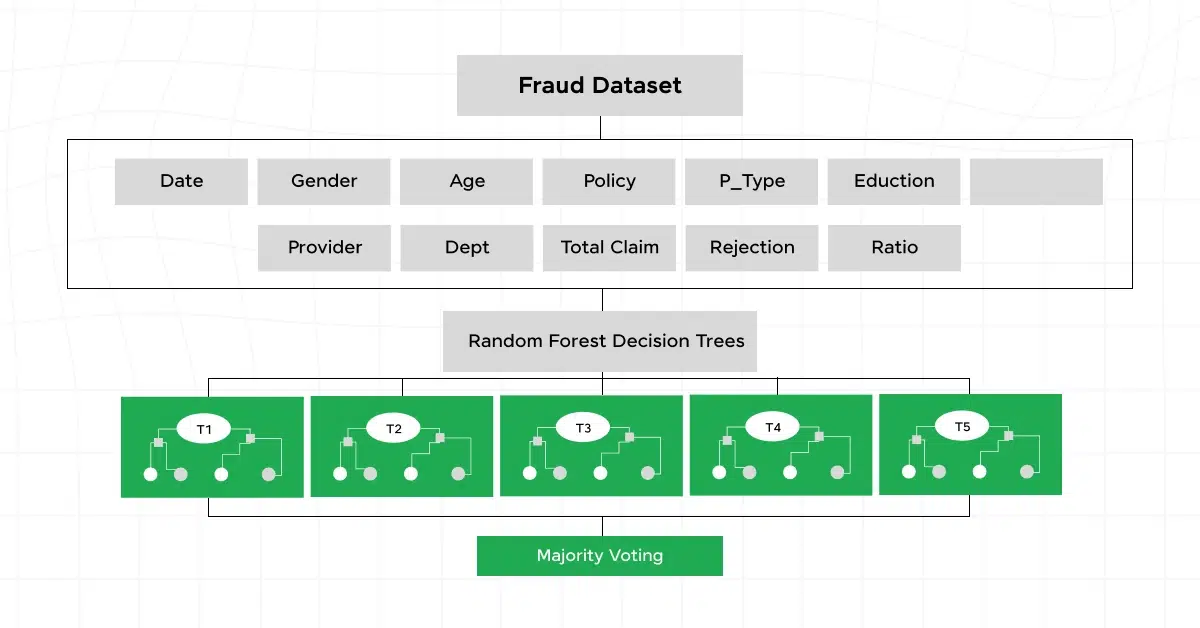
- Predicting Patient Outcomes: AI models can forecast disease progression and patient recovery, which helps in planning effective treatment strategies.
- Enhanced Fraud Detection: AI algorithms are adept at identifying patterns indicative of fraudulent activities in healthcare claims, enabling proactive measures to prevent financial losses.
- Operational Efficiency: By automating the detection of fraudulent claims and streamlining the approval of legitimate ones, AI significantly reduces operational costs and improves service delivery in healthcare.
To highlight the advanced capabilities of predictive AI across these applications, the following table provides a technical differentiation:
| Application | Capabilities of Predictive AI | Impact on Industry |
|---|---|---|
| Financial Forecasting | High-volume data analysis, real-time adaptability | Enhances accuracy of financial predictions, supports dynamic decision-making |
| Customer Behavior Analysis | Trend identification, predictive customer segmentation | Enables personalized marketing, improves customer engagement |
| Healthcare and Fraud Detection | Predicts patient outcomes, detects fraudulent patterns | Improves patient care, prevents financial losses due to fraud |
This table underscores the versatility and efficiency of predictive AI in transforming various sectors by providing accurate predictions and insights that drive informed decision-making and strategic planning.
Must Read: GUVI’s AI for India 2.0: Partnering with Skill India for Success
Choosing the Right AI for Your Needs
Considerations
When deciding between generative AI and predictive AI, it’s crucial to consider your specific needs and the nature of the tasks at hand.
- Generative AI is your go-to if you’re looking to create new content or data, such as digital images, text, or complex simulations. This type of AI excels in environments where innovation and creativity are prized, such as in marketing, design, and entertainment.
- On the other hand, predictive AI should be your choice if your primary goal is to analyze data to forecast future outcomes. This AI is particularly valuable in fields like finance, healthcare, and logistics, where making accurate predictions can significantly impact decision-making and strategic planning.
Application Scenarios
- Creative Industries: If you are in a sector that values original content creation, such as digital marketing or media, generative AI can help you produce a variety of innovative materials. For instance, it can generate unique marketing copy or new designs, enhancing your creative output.
- Healthcare: In healthcare, predictive AI can be a game-changer by predicting patient outcomes, helping tailor treatment plans, or managing hospital resources more effectively.
- Retail: For retail businesses, predictive AI can optimize inventory management and improve customer service by predicting purchasing trends and customer behavior.
- Manufacturing: Generative AI can revolutionize product design and production processes by rapidly prototyping and testing new product designs through simulation, thus reducing time-to-market and fostering innovation.
Also Explore: 21 Best AI Tools For UI/UX Designers in 2025
To help you further understand the distinctions and guide your decision on which AI technology to adopt, here is a detailed differentiation table:
| Criteria | Generative AI | Predictive AI |
|---|---|---|
| Primary Use | Creating new content and data | Analyzing data and making predictions |
| Core Strengths | Creativity and innovation | Analytical and forecasting accuracy |
| Ideal Applications | Content creation, design, simulation | Forecasting, risk assessment |
| Data Requirements | Diverse datasets for pattern learning | Historical data for trend analysis |
| Learning Approach | Often unsupervised or semi-supervised | Primarily supervised learning |
This table should serve as a guide to help you align your business needs with the appropriate AI technology, ensuring that your investment in AI drives the desired outcomes and enhances your operational capabilities.
Begin your Artificial Intelligence & Machine Learning journey with GUVI’s Artificial Intelligence & Machine Learning Course. Learn essential technologies like matplotlib, pandas, SQL, NLP, and deep learning while working on real-world projects.
Concluding Thoughts…
Throughout this comprehensive exploration of generative AI and predictive AI, we have delved into their core functionalities, distinguishing characteristics, and a broad range of applications across industries.
This discussion illuminated the distinct roles each type of AI plays in driving innovation, enhancing decision-making, and reshaping the future of technology and business.
Generative AI, with its creative prowess, brings forth an era of unprecedented innovation in content creation, design, and simulation, unleashing new possibilities for industries to explore.
Predictive AI, on the other hand, stands as the backbone of strategic planning, risk management, and efficiency optimization, empowering businesses with the foresight needed to thrive in competitive environments.
Also Read: AI vs ML vs Data Science: What Should You Learn In 2025?
FAQs
What is the difference between analytic AI and generative AI?
Analytic AI focuses on analyzing data and making predictions based on existing information, while generative AI creates new data or content.
Is Google a generative AI?
No, Google primarily employs analytic AI algorithms to analyze data and provide search results, but it also uses generative AI in some applications like language processing.
How does predictive AI work?
Predictive AI utilizes algorithms to analyze past data and patterns to make predictions about future events or outcomes.



















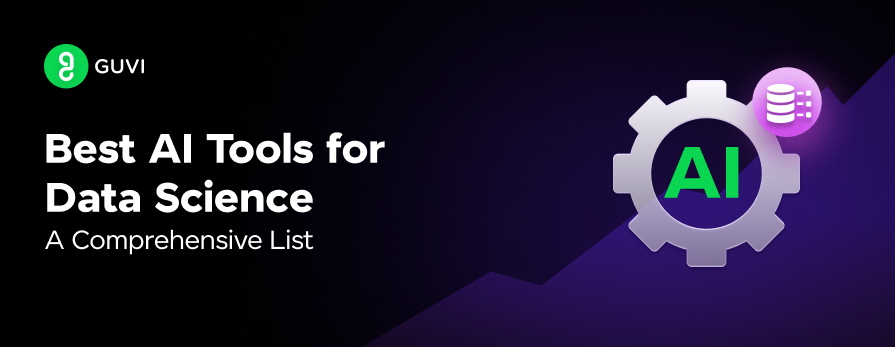
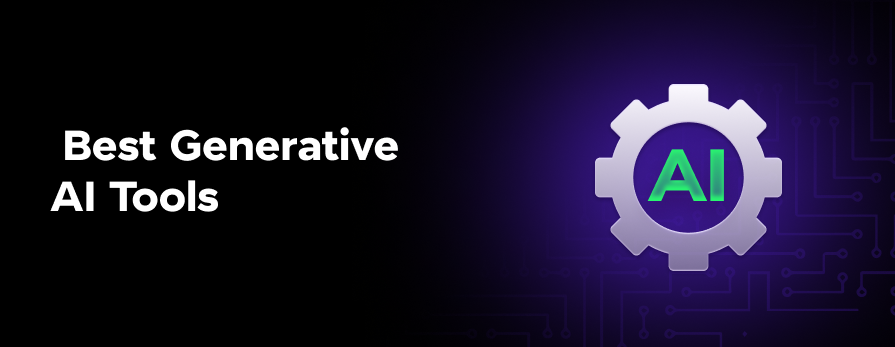
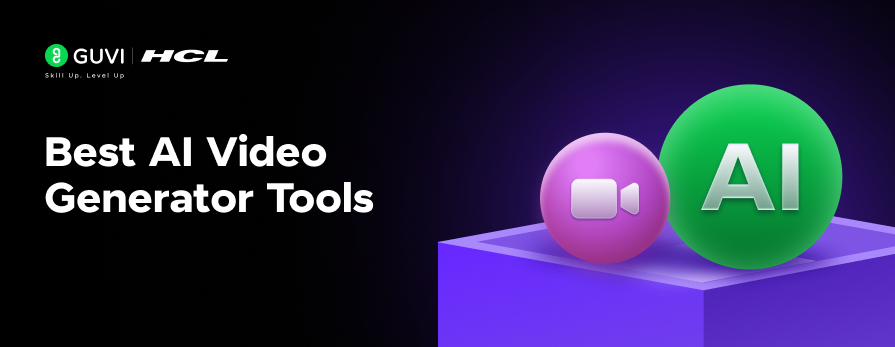
![8 Generative AI Apps to Boost Your Productivity [+2 Bonus Apps] 24 Generative AI Apps to Boost Your Productivity](https://www.guvi.in/blog/wp-content/uploads/2024/08/10-Generative-AI-Apps-to-Boost-Your-Productivity.png)
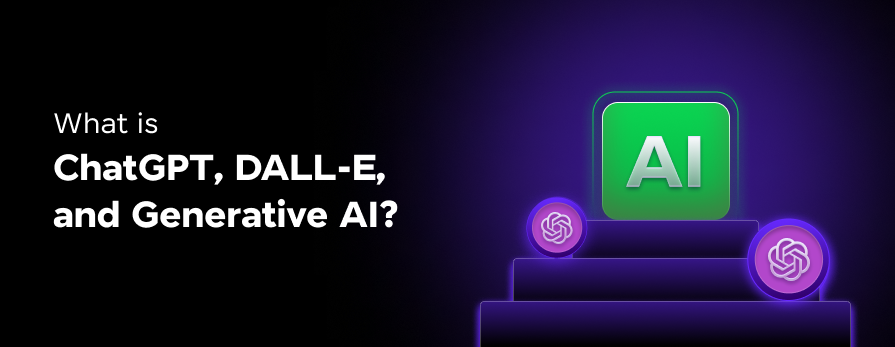
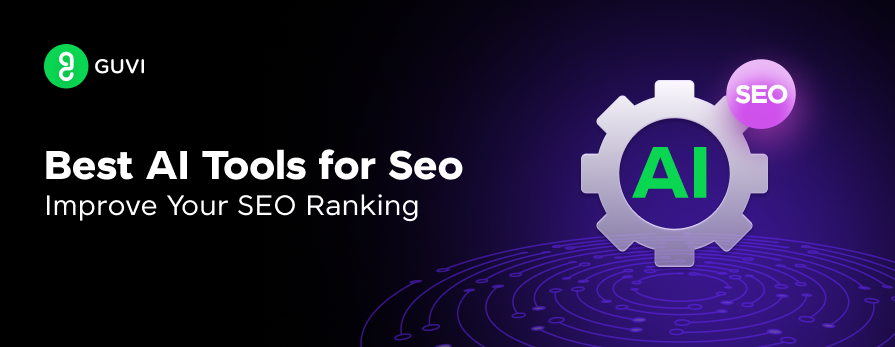
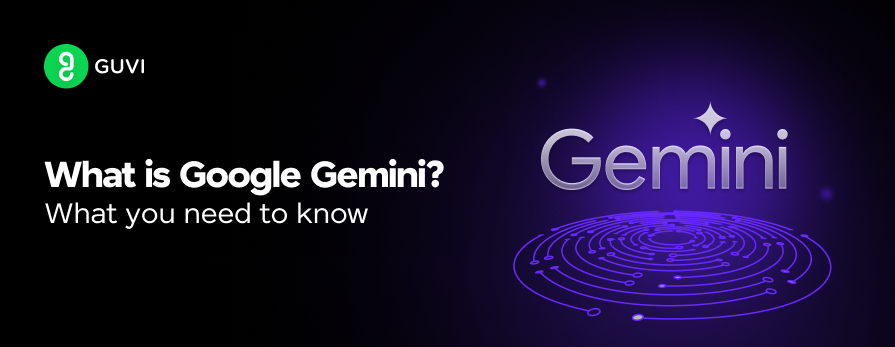
Did you enjoy this article?